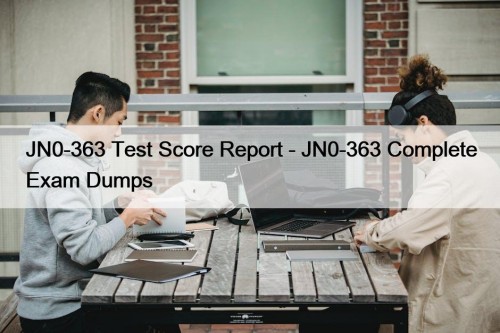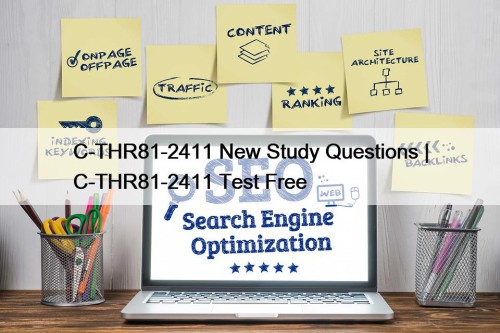Most Popular
 Pass Guaranteed Quiz Snowflake - High Hit-Rate Useful ARA-C01 Dumps
Pass Guaranteed Quiz Snowflake - High Hit-Rate Useful ARA-C01 Dumps
BTW, DOWNLOAD part of VCEDumps ARA-C01 dumps from Cloud Storage: ...
 JN0-363 Test Score Report - JN0-363 Complete Exam Dumps
JN0-363 Test Score Report - JN0-363 Complete Exam Dumps
What's more, part of that TestSimulate JN0-363 dumps now are ...
 C-THR81-2411 New Study Questions | C-THR81-2411 Test Free
C-THR81-2411 New Study Questions | C-THR81-2411 Test Free
If you are worried about your exam, and want to ...



Pass Guaranteed Quiz Snowflake - High Hit-Rate Useful ARA-C01 Dumps

BTW, DOWNLOAD part of VCEDumps ARA-C01 dumps from Cloud Storage: https://drive.google.com/open?id=1fZC24obLfnggUVT3VFZdpu-wXNMubJhZ
As far as the top features of VCEDumps ARA-C01 exam questions formats are concerned, the Snowflake ARA-C01 desktop practice test software and web-based practice test software both are customizable and track your performance. These ARA-C01 practice tests are specifically designed to give you a real-time ARA-C01 Exam environment for preparation. You can trust both ARA-C01 practice test software and start preparing today. The desktop software runs on Windows computers. The web-based ARA-C01 practice exam is supported by all browsers and operating systems.
Earning the Snowflake ARA-C01: SnowPro Advanced Architect Certification demonstrates a high level of expertise and proficiency in designing and implementing complex data solutions using Snowflake’s cloud data platform. It signifies that the candidate has the skills and knowledge required to deliver successful Snowflake solutions that meet the highest standards of performance, security, and scalability. It is a valuable credential for professionals who want to advance their careers in the field of data analytics and cloud computing.
Useful ARA-C01 Dumps - Your Best Friend to Pass SnowPro Advanced Architect Certification
Candidates all around the globe use their full potential only to get Snowflake ARA-C01 certification. Once the candidate is a Snowflake certified, he gets multiple good career opportunities in the Snowflake sector. To pass the ARA-C01 Certification Exam a candidate needs to be updated and reliable SnowPro Advanced Architect Certification (ARA-C01) prep material.
Snowflake SnowPro Advanced Architect Certification Sample Questions (Q40-Q45):
NEW QUESTION # 40
Data loading transformation as part of copying data to a table from stage supports selecting data from user stage and named stages(internal and external) only
- A. TRUE
- B. FALSE
Answer: A
NEW QUESTION # 41
Which system functions does Snowflake provide to monitor clustering information within a table (Choose two.)
- A. SYSTEM$CLUSTERING_DEPTH
- B. SYSTEM$CLUSTERING_KEYS
- C. SYSTEM$CLUSTERING_USAGE
- D. SYSTEM$CLUSTERING_INFORMATION
- E. SYSTEM$CLUSTERING_PERCENT
Answer: A,D
Explanation:
According to the Snowflake documentation, these two system functions are provided by Snowflake to monitor clustering information within a table. A system function is a type of function that allows executing actions or returning information about the system. A clustering key is a feature that allows organizing data across micro-partitions based on one or more columns in the table. Clustering can improve query performance by reducing the number of files to scan.
* SYSTEM$CLUSTERING_INFORMATION is a system function that returns clustering information, including average clustering depth, for a table based on one or more columns in the table. The function takes a table name and an optional column name or expression as arguments, and returns a JSON string
* with the clustering information. The clustering information includes the cluster by keys, the total partition count, the total constant partition count, the average overlaps, and the average depth1.
* SYSTEM$CLUSTERING_DEPTH is a system function that returns the clustering depth for a table based on one or more columns in the table. The function takes a table name and an optional column name or expression as arguments, and returns an integer value with the clustering depth. The clustering depth is the maximum number of overlapping micro-partitions for any micro-partition in the table. A lower clustering depth indicates a better clustering2.
References:
* SYSTEM$CLUSTERING_INFORMATION | Snowflake Documentation
* SYSTEM$CLUSTERING_DEPTH | Snowflake Documentation
NEW QUESTION # 42
Out of the three query optimization techniques(search optimization, clustering and materialized view) which one does not have storage cost
- A. Search Optimization Service
- B. Clustering the Table
- C. Materialized View
Answer: B
NEW QUESTION # 43
What are purposes for creating a storage integration? (Choose three.)
- A. Avoid supplying credentials when creating a stage or when loading or unloading data.
- B. Create private VPC endpoints that allow direct, secure connectivity between VPCs without traversing the public internet.
- C. Manage credentials from multiple cloud providers in one single Snowflake object.
- D. Control access to Snowflake data using a master encryption key that is maintained in the cloud provider's key management service.
- E. Support multiple external stages using one single Snowflake object.
- F. Store a generated identity and access management (IAM) entity for an external cloud provider regardless of the cloud provider that hosts the Snowflake account.
Answer: A,E,F
Explanation:
Explanation
* A storage integration is a Snowflake object that stores a generated identity and access management (IAM) entity for an external cloud provider, such as Amazon S3, Google Cloud Storage, or Microsoft Azure Blob Storage. This integration allows Snowflake to read data from and write data to an external storage location referenced in an external stage1.
* One purpose of creating a storage integration is to support multiple external stages using one single Snowflake object. An integration can list buckets (and optional paths) that limitthe locations users can specify when creating external stages that use the integration. Note that many external stage objects can reference different buckets and paths and use the same storage integration for authentication1.
Therefore, option C is correct.
* Another purpose of creating a storage integration is to avoid supplying credentials when creating a stage or when loading or unloading data. Integrations are named, first-class Snowflake objects that avoid the need for passing explicit cloud provider credentials such as secret keys or access tokens. Integration objects store an IAM user ID, and an administrator in your organization grants the IAM user permissions in the cloud provider account1. Therefore, option D is correct.
* A third purpose of creating a storage integration is to store a generated IAM entity for an external cloud provider regardless of the cloud provider that hosts the Snowflake account. For example, you can create a storage integration for Amazon S3 even if your Snowflake account is hosted on Azure or Google Cloud Platform. This allows you to access data across different cloud platforms using Snowflake1.
Therefore, option B is correct.
* Option A is incorrect, because creating a storage integration does not control access to Snowflake data using a master encryption key. Snowflake encrypts all data using a hierarchical key model, and the master encryption key is managed by Snowflake or by the customer using a cloud provider's key management service. This is independent of the storage integration feature2.
* Option E is incorrect, because creating a storage integration does not create private VPC endpoints.
Private VPC endpoints are a network configuration option that allow direct, secure connectivity between VPCs without traversing the public internet. This is also independent of the storage integration feature3.
* Option F is incorrect, because creating a storage integration does not manage credentials from multiple cloud providers in one single Snowflake object. A storage integration is specific to one cloud provider, and you need to create separate integrations for each cloud provider you want to access4.
References: : Encryption and Decryption : Private Link for Snowflake : CREATE STORAGE INTEGRATION : Option 1: Configuring a Snowflake Storage Integration to Access Amazon S3
NEW QUESTION # 44
Select the true statement
- A. Privileges are granted to roles. Roles are granted to users
- B. Privileges are granted to users. Users are granted to roles
- C. Privileges are granted to both roles and users
Answer: A
NEW QUESTION # 45
......
The PDF version of the VCEDumps Snowflake ARA-C01 prep material is easily accessible. This format is ideal for someone who is constantly on the move, as you can prepare for your SnowPro Advanced Architect Certification (ARA-C01) exam whether you are using your smartphone, tablet, or laptop. You can study anywhere, at any time, without having to worry about installing anything. Furthermore, you can study with a hard copy by printing all of your SnowPro Advanced Architect Certification (ARA-C01) PDF questions. We offer regular updates in PDF format to improve SnowPro Advanced Architect Certification (ARA-C01) questions according to changes in the exam.
Reliable ARA-C01 Exam Voucher: https://www.vcedumps.com/ARA-C01-examcollection.html
- 100% Pass-Rate Useful ARA-C01 Dumps - Leader in Qualification Exams - Well-Prepared Snowflake SnowPro Advanced Architect Certification ⚠ Copy URL ⏩ www.passtestking.com ⏪ open and search for ⇛ ARA-C01 ⇚ to download for free 🆑ARA-C01 New Braindumps Questions
- Exam ARA-C01 Questions ❔ ARA-C01 Reliable Cram Materials 🤰 Dumps ARA-C01 Download 🗻 Open ➤ www.pdfvce.com ⮘ and search for [ ARA-C01 ] to download exam materials for free 💃Actual ARA-C01 Test
- SnowPro Advanced Architect Certification pass guide: latest ARA-C01 exam prep collection 🦟 Enter “ www.testkingpdf.com ” and search for ⏩ ARA-C01 ⏪ to download for free 🔰ARA-C01 Relevant Exam Dumps
- ARA-C01 Practice Exam Pdf 🐱 ARA-C01 Valid Exam Camp 🥉 New ARA-C01 Test Topics ➡️ Download ⏩ ARA-C01 ⏪ for free by simply entering 《 www.pdfvce.com 》 website 🐓ARA-C01 Valid Dumps Sheet
- Pass Guaranteed Quiz 2025 Snowflake ARA-C01: SnowPro Advanced Architect Certification – High Pass-Rate Useful Dumps 🛵 Open website ▶ www.prep4sures.top ◀ and search for ⮆ ARA-C01 ⮄ for free download ✏ARA-C01 Reliable Test Experience
- Top Useful ARA-C01 Dumps - Useful Materials to help you pass Snowflake ARA-C01 ⚜ Open ⮆ www.pdfvce.com ⮄ and search for 《 ARA-C01 》 to download exam materials for free 🧳ARA-C01 Relevant Exam Dumps
- Pass Guaranteed Quiz 2025 Snowflake ARA-C01: SnowPro Advanced Architect Certification – High Pass-Rate Useful Dumps 🛫 The page for free download of ➽ ARA-C01 🢪 on ➠ www.lead1pass.com 🠰 will open immediately 💽New ARA-C01 Exam Duration
- Marvelous Snowflake Useful ARA-C01 Dumps With Interarctive Test Engine - Authoritative Reliable ARA-C01 Exam Voucher 🏭 Simply search for ☀ ARA-C01 ️☀️ for free download on ( www.pdfvce.com ) 🍍ARA-C01 Exam Tips
- Pass Guaranteed Quiz 2025 Snowflake ARA-C01: SnowPro Advanced Architect Certification – High Pass-Rate Useful Dumps 🔳 Search for ⮆ ARA-C01 ⮄ on { www.exams4collection.com } immediately to obtain a free download 🥵Most ARA-C01 Reliable Questions
- ARA-C01 Test Dumps.zip 😟 ARA-C01 Visual Cert Test 🤦 ARA-C01 Valid Exam Camp ⏰ Search for ▛ ARA-C01 ▟ on ✔ www.pdfvce.com ️✔️ immediately to obtain a free download 😤ARA-C01 Pdf Files
- Snowflake ARA-C01 Desktop Practice Exam Questions Software 🥐 Search on ▛ www.free4dump.com ▟ for ▷ ARA-C01 ◁ to obtain exam materials for free download 🕧ARA-C01 Relevant Exam Dumps
- ARA-C01 Exam Questions
- courses.dbmindia.org skillhivebd.com 123.59.83.120:8080 99onlinecourses.com designwithks.in shikhboanayase.com becombetter.com barikschool.online bdcademy.zonss.xyz nomal.org
What's more, part of that VCEDumps ARA-C01 dumps now are free: https://drive.google.com/open?id=1fZC24obLfnggUVT3VFZdpu-wXNMubJhZ
Tags: Useful ARA-C01 Dumps, Reliable ARA-C01 Exam Voucher, ARA-C01 Reliable Test Questions, ARA-C01 Training Pdf, ARA-C01 Valid Real Exam